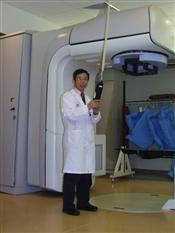A Practical Workflow to Streamline Treatment Planning for Reirradiation with Considering Biological Doses
Presentations
PO-GePV-T-170 (Sunday, 7/25/2021) [Eastern Time (GMT-4)]
Purpose: With recent substantial increase of radiation retreatments, solutions to include biological effects of the initial irradiation (II) in the re-irradiation (RI) are demanded. In this study, we develop a practical workflow to consistently consider biological dose distributions of the II in the treatment planning of reirradiation.
Methods: The workflow was developed using MIM software, including its extensions, to (1) host patient retreatment plan data, tumor and organ-specific radiobiological model parameters extracted from pooled clinical data using common dose volume constraints with a linear-quadratic-linear (LQ-L) model, and (2) perform biologically effective dose (BED) calculation, deformable image registration (DIR), dose summation and plan review. To plan a RI, the workflow includes (1) converting physical dose distributions to BED distributions using the selected model parameters for both II and RI, (2) creating the composite BED distribution by DIR of both planning images with considering tissue repair between the II and RI, (3) creating planning organ at risk volume (PRV) to consider the uncertainty in DIR, (4) converting the composite BED distribution into the physical dose distribution of the prescribed RI fractionation for plan evaluation, and (5) adjusting the RI plan if target coverage and doses to organs at risk are unacceptable and repeating the workflow until the composite plan achieves the prescription goal.
Results: The workflow has been successfully used for 6 patients. It helps to adjust dose fractionation, in addition to beam and field arrangements, to achieve the prescription for the irradiation. Up to 18% dose difference was found between calculations with the current workflow and the conventional EQD2 method.
Conclusion: The newly developed workflow has been successfully used in the clinic and will facilitate a prospective trial that is being designed to investigate efficacy of retreatment for multiple tumor sites.
ePosters
Keywords
Effective Dose, Dose Response, Linear Quadratic Model
Taxonomy
TH- Radiobiology(RBio)/Biology(Bio): RBio- general
Contact Email



